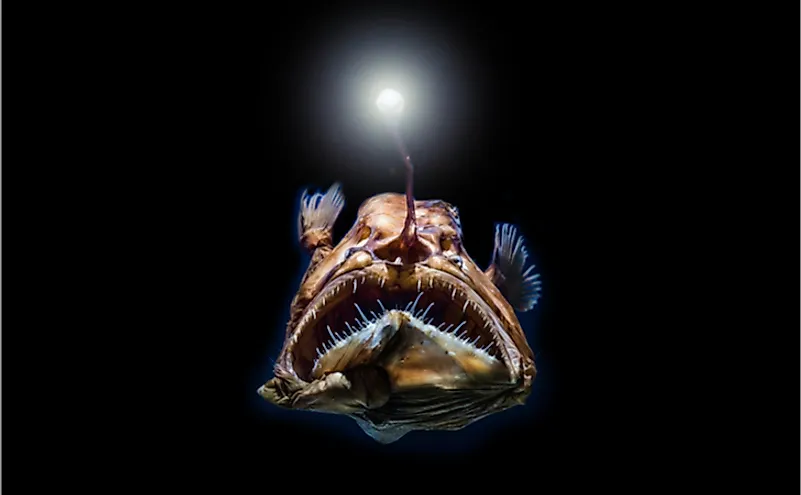How Do Deep Sea Creatures Survive The High Water Pressure?

Deep-sea creatures are animals that live below the photic zone of the ocean. The photic zone, also known as the sunlight zone, is the uppermost layer of a lake or ocean that receives sufficient sunlight to support aquatic plant life. Most of the deep-sea creatures live thousands of feet below the water surface. The survival challenges faced by these animals include little food, high water pressure, low oxygen levels, darkness, and extremely cold temperatures. Examples of deep-sea creatures are sharks, whales, seals, crabs, Atlantic Wolffish pair, sea urchins, fangtooth fish, giant tube worms, vampire squids, Pacific Viperfish, anglers, red-lipped batfish, dumbo octopus, hairy frogfish, coffinfish, spotted handfish, giant isopods, Atlantic footballfish, zombie worms, and many others.
These creatures have several adaptations like compressible lungs, lung-like swim bladders, etc., to help them overcome the high water pressure in their deep-water environment.
Adaptation of the Deep Sea Creatures to High Water Pressure
Ideally, high pressure in the deep sea should crash the sea creatures. But, the incredible fact is that many marine and fish species survive even at the highest possible pressure found as deep as 25,000 feet below the sea surface. Before diving into the water, many deep-sea creatures exhale nearly 90% of the air in their lungs and keep only around10% of the oxygen available for their use. The survival of the marine creatures in less oxygen supply is made possible by several factors.
Holding The Breath For Hours
Some whales and seals have shocked the world with their resilience in high-pressure deep-sea waters. For example, the Cuvier’s beaked whale can dive as deep as 2,992 meters and withhold its breath in water for a record 2 hours and 18 minutes. On the other hand, the elephant seal can hold its breath in water for 2 hours.
Completely Compressible Lungs
The beaked whale is the deepest diving cetacean. Under pressure, its lung collapses forcing all of the gas in its lungs out into the muscles and bloodstream where the gas is dissolved. The muscles are adapted to hold more myoglobin while the blood possesses more hemoglobin for storage of oxygen. Collapsing of the lungs results in reduced air pockets and minimum oxygen available for its survival.
Lowered Heart Rate
In some creatures, the heart rate is minimized to about 4 beats per minute while others stop breathing for a while when diving into the deep-sea.
Reduced Movement
Some deep-sea creatures reduce their movement so that they glide rather than swim downwards. Gliding is a process that requires no muscle movement; saving the creatures’ oxygen for use on their journey back to the water surface.
Lowered Metabolic Activity
Under high barometric pressure, some deep-sea creatures such as whales and seals shut down their digestion, liver, and kidney functions.
Lung-like Swim Bladders
A group of deep-sea creatures have lung-like swim bladders which help in controlling their buoyancy. The swim bladders do not collapse because in the deep sea the gas inside is equivalent to the pressure of the water outside.
Presence Of Trimethylamine Oxide (TMAO)
Presence of TMAO in deep-sea fish prevents the distortion and compression of proteins and other vital molecules within the body under intense external pressure.
No Nitrogen Absorption
Lack of nitrogen absorption at deep pressure prevents the development of nitrogen narcosis and decompression sickness.
Learn more about the deep sea ecology here.











